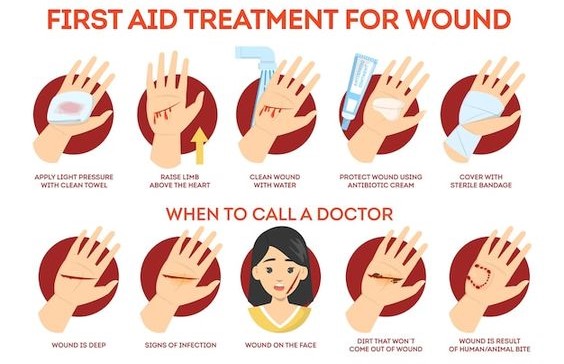Nursing case studies are invaluable tools for learning, sharing knowledge, and improving patient care. When focused on wound care, they provide a platform to explore the complexities of this crucial aspect of nursing practice. This guide will walk you through the process of writing a compelling nursing case study on wound care, addressing key elements and providing tips to ensure your study is informative, engaging, and impactful.
Wound Care in Nursing: A Vital Aspect of Patient Care
Wound care is a critical component of nursing practice, encompassing the assessment, treatment, and management of wounds. It involves a multi-faceted approach, addressing various factors such as:
- Assessment: Nurses meticulously assess wounds, evaluating their size, depth, location, color, and presence of exudate. They also consider the patient's overall health, comorbidities, and medications.
- Cleaning and Debridement: Wound cleaning removes debris and foreign materials, while debridement eliminates dead tissue, promoting healing.
- Dressing Selection: Nurses choose appropriate dressings based on wound type, size, and the presence of infection.
- Education and Patient Empowerment: Nurses educate patients about wound care, fostering independence and self-management.
- Pain Management: Pain is a significant concern for wound patients. Nurses administer analgesics and employ strategies to minimize discomfort.
- Prevention: Nurses play a crucial role in preventing wound development through education and proactive measures.

Nursing case study on wound care can illustrate the application of these principles in real-world settings.
Nursing case study on wound care is a valuable tool for understanding the complexities of wound management.
By applying their knowledge and expertise, nurses contribute to optimal wound healing, reducing complications, and improving patient outcomes.
A well-articulated nursing case study on wound care offers insights into the multifaceted aspects of this critical nursing skill.
How to Write an Engaging Nursing Case Study on Wound Care
1. Selecting a Compelling Case
The foundation of a strong nursing case study on wound care lies in choosing a compelling case. Consider these factors:
- Complexity: Select a case that showcases a challenging wound, requiring a multifaceted approach to care.
- Relevance: Choose a case relevant to current clinical practice, addressing a common wound type or highlighting a specific aspect of wound care.
- Learner-Centric: Ensure the case offers valuable learning points for nurses at all levels of experience.
- Ethical Considerations: Always prioritize patient privacy and confidentiality when selecting a case.
Example Cases:
- A diabetic patient with a chronic, non-healing foot ulcer. This case could explore the complexities of managing diabetes-related wounds, the impact of lifestyle modifications, and advanced wound care techniques.
- An elderly patient with a pressure ulcer. This case could focus on the challenges of preventing and managing pressure ulcers in vulnerable populations, highlighting the importance of early intervention and holistic care.
- A young patient with a burn injury. This case could demonstrate the role of the nurse in acute burn management, including pain control, infection prevention, and psychosocial support.
2. Gathering and Organizing Data
Once you've selected your case, meticulous data collection is crucial. This includes:
- Patient Demographics: Age, gender, medical history, relevant social factors.
- Wound Assessment: Location, size, depth, characteristics (e.g., color, exudate, odor), and any associated complications.
- Nursing Interventions: Wound cleaning, dressing selection, wound debridement, pressure redistribution, pain management, education provided to the patient and family, and any other relevant interventions.
- Patient Progress: Charting wound measurements, photographic documentation, descriptions of wound healing, any setbacks or complications, and changes in the patient's overall condition.
- Patient Outcomes: Describe the patient's progress towards wound healing, including any functional or quality-of-life improvements.
3. Structuring the Case Study
A well-structured nursing case study on wound care provides a clear and concise narrative. Consider this framework:

a. Introduction:
- Brief Patient Overview: Introduce the patient's demographic information and relevant medical history.
- Presenting Problem: Clearly state the primary wound care challenge.
- Purpose of the Case Study: State the learning objectives of the case study, highlighting the key aspects of wound care that will be explored.
b. Case Presentation:
- Subjective Data: Include the patient's description of their condition, their concerns, and their history related to the wound.
- Objective Data: Provide detailed information about the wound itself, including its appearance, measurements, and any associated complications.
- Assessment: Synthesize the subjective and objective data, identifying the patient's needs and potential risks.
- Nursing Diagnoses: Formulate relevant nursing diagnoses based on the patient's condition and needs.
c. Nursing Interventions:
- Explain the rationale behind your chosen interventions. Include evidence-based practices and guidelines to support your decisions.
- Describe the specific interventions implemented. Detail each step of the wound care process, including dressing changes, wound debridement, pain management, patient education, and any other interventions.
d. Patient Outcomes:
- Present the patient's progress towards wound healing. Include detailed observations, measurements, and photographic documentation.
- Analyze the effectiveness of the interventions implemented. Discuss how the nursing interventions impacted the patient's condition, promoting or inhibiting healing.
- Describe any challenges encountered during the care process. Identify any obstacles or complications that arose, and discuss how they were managed.
e. Discussion:
- Integrate relevant research findings and evidence-based practices. Link the case study to existing literature, providing support for the chosen interventions and outcomes.
- Reflect on the implications of the case study for clinical practice. Identify key takeaways, suggesting best practices and areas for further exploration.
- Address the limitations of the case study. Acknowledge any potential biases or constraints that may have impacted the findings.
4. Enhancing the Case Study: Engaging Elements
To truly captivate your audience, consider these elements:
- Interactive Components: Incorporate discussion questions, scenarios, or case simulations to encourage active learning and critical thinking.
- Visual Aids: Use photographs, diagrams, and flowcharts to illustrate wound characteristics, interventions, and healing progression.
- Case Narratives: Incorporate patient quotes or excerpts from patient journals to personalize the case study and connect with readers on a deeper level.
Examples of Topic Ideas for Nursing Essays on Wound Care
Here are 6 engaging topic ideas for nursing case studies on wound care:
- The Effectiveness of Negative Pressure Wound Therapy (NPWT) in a Patient with a Chronic Diabetic Foot Ulcer: This nursing case study on wound care would explore the use of NPWT in a specific patient and analyze its impact on wound healing, pain management, and overall patient outcomes.
- Implementing a Skin Integrity Program to Prevent Pressure Ulcers in a High-Risk Population: This nursing case study on wound care would examine the development and implementation of a comprehensive skin integrity program in a specific setting (e.g., a long-term care facility or an acute care unit). It would focus on the effectiveness of the program in reducing pressure ulcer incidence.
- The Role of Early Intervention and Nurse-Led Wound Care in the Management of Venous Leg Ulcers: This nursing case study on wound care would highlight the importance of early intervention by nurses in the management of venous leg ulcers. It would analyze the impact of timely wound assessment, appropriate compression therapy, and patient education on healing outcomes.
- A Nursing Case Study on Wound Care: Assessing and Managing Wound Infection in a Post-Operative Patient: This nursing case study on wound care would delve into the assessment and management of wound infection in a post-operative patient. It would analyze the nurse's role in identifying signs of infection, initiating appropriate interventions, and collaborating with other healthcare professionals.
- Improving Patient Adherence to Home Wound Care Instructions: This nursing case study on wound care would explore strategies for improving patient adherence to home wound care instructions. It would examine the role of patient education, communication, and support in promoting successful wound healing in the home setting.
- The Impact of Nutritional Support on Wound Healing in a Malnourished Patient: This nursing case study on wound care would examine the role of nutrition in wound healing. It would analyze the nutritional needs of a malnourished patient with a wound and the impact of providing appropriate nutritional support on wound closure and overall patient recovery.
Common Pitfalls in Writing Nursing Case Studies
Writing a compelling and informative nursing case study requires careful attention to detail and adherence to best practices. Here are some common pitfalls to avoid:
1. Lack of Clear Focus:
- Ensure a defined problem or intervention: The case study should focus on a specific nursing challenge or intervention. For example, a nursing case study on wound care should focus on a particular type of wound, the treatment used, and the patient's outcome.
- Avoid redundancy: Don't try to cover too many topics. Instead, concentrate on a single problem, such as a nursing case study on wound care focusing on the management of diabetic foot ulcers.
- Don't stray from the objective: Stick to the core issue of the nursing case study on wound care. Don't get sidetracked by unrelated information.
2. Inadequate Patient Information:
- Provide sufficient background: Include relevant patient demographics, medical history, and social context. This helps the reader understand the situation and the nursing interventions involved.
- Maintain patient confidentiality: Use initials and avoid disclosing identifiable information.
- Include relevant details: Don't skip over important information. A nursing case study on wound care should include the wound type, size, location, and any complications.
3. Weak Analysis and Interpretation:
- Go beyond description: Don't simply recount events. Analyze the situation, discuss nursing actions, and interpret the outcomes.
- Connect the dots: Explain how the patient's condition, the nursing interventions, and the results are linked.
- Demonstrate critical thinking: Reflect on the nursing care provided in the nursing case study on wound care. Discuss the rationale for decisions made and the potential for improvement.
4. Poorly Structured and Presented:
- Follow a clear format: Use a structured approach with headings, subheadings, and bullet points to enhance readability.
- Use concise and accurate language: Avoid jargon and ensure clear communication.
- Use visuals effectively: Include relevant images, diagrams, or charts to illustrate the nursing case study on wound care.
5. Lack of References and Sources:
- Support claims with evidence: Cite relevant research findings, guidelines, and standards of practice.
- Use credible sources: Refer to peer-reviewed journals, professional organizations, and reputable websites.
6. Not Learning from the Experience:
- Reflect on the case: What were the key takeaways? How could the care be improved?
- Identify areas for further research or professional development: A nursing case study on wound care might highlight gaps in knowledge or practice.
By avoiding these pitfalls, you can create a comprehensive and insightful nursing case study that effectively communicates valuable knowledge and promotes learning.

Remember, a well-written nursing case study on wound care can be a valuable resource for nurses, students, and researchers, helping to advance the understanding and practice of wound care.
Get Professional Help with Writing a Nursing Case Study on Wound Care
Writing an engaging nursing case study on wound care may still be challenging even with all the above insights. However, you can easily avoid the pressures of assignment writing with professional help from Exemplary Dissertations. We offer the best writing assistance for nursing case studies, research papers, essays and dissertations.